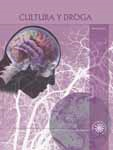Authors
Abstract
For ancient societies there wasn’t any difficulty in understanding the world in regards to non-causal interconnections between individual and dissimile events. Scientific knowledge led to the substitution of affinities and mysterious relations between events by causality. Recently, the quantum theory and relativity revolutionized this Newtonian universe, allowing a new vision of the world, which reveals an essential individuality of nature. Yagé experiences frequently create phenomena that could only be understood if non-causal explanation models are used, such as those included in the Jungian concept of “synchronicity”.
Keywords
References
Briggs, J. P., Peat, F. D. (1996). A través del maravilloso espejo del universo. Barcelona: Gedisa.
Chetwynd, T. (1982). “A Dictionary of Symbols”. Nueva York: Granada Publishers. En: Peat, D. F. (1987). Sincronicidad. Barcelona: Kairós. p. 9.
El Foro. (2000). APA style electronic formats. [Online].
Jung, C. G. (1968). “Analytical Psychology: Its Theory an Practice”. Nueva York: Ramdom House, Vintage Books. En: Peat, D. F. (1987). Sincronicidad. Barcelona: Kairós. p. 28.
Kammerer, P. (1987). “Las raíces del azar”. Barcelona: Kairós. En: Peat, D. F. (1987). Sincronicidad. Barcelona: Kairós. p. 18.
Peat, D. F. (1987). Sincronicidad. Barcelona: Kairós.
Rugdley, R. (1999). Enciclopedia de las sustancias psicoactivas. Barcelona: Paidós.
Searle, J. (2001). Mentes, cerebros y ciencia. Madrid: Cátedra.
Spicasc. (2003). Correspondencia analógica y sincronicidad. Médium Ceoeli No. 9. APA style electronic formats. [Online]. www.astro.com/astrología/in.
Watts, A., Campbell, J., Progoff, Ira., May, R., Wilder, A., Miller, D. L. et. al. (1997). Mitos, sueños y religión. Barceloná: Kairós.
Wheeler, J. A. en Paul Buckley & F. David Peat (1979). A Question of Physics.

 PDF (Español)
PDF (Español)
 FLIP
FLIP

















